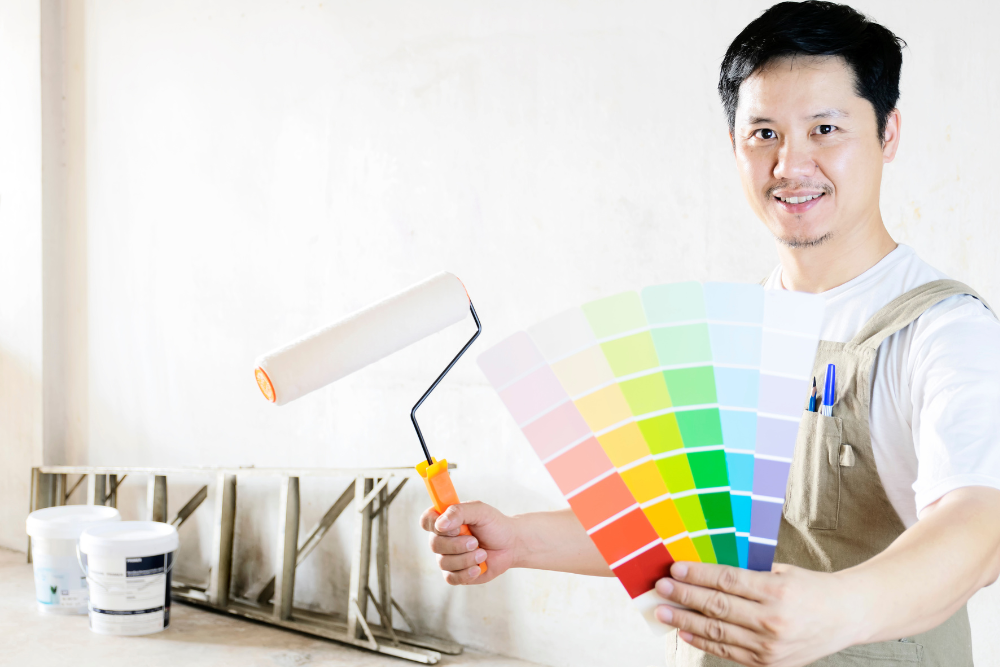There’s no better feeling than opening the door to your home after a long, stressful day and breathing a sigh of relief as you enter through the front door.
Whether you live in an apartment, a rustic farmhouse, or a house in the suburbs, your home must be designed to be a calming, stress-free space where you’re able to rest and recharge.
Investing in soothing paint colors for the interior rooms of your home can help in creating a tranquil environment for you to live in. Experts in color psychology have proven that colors can trigger positive or negative emotions depending on their tones.
Find out how painting the interior rooms of your abode in specific soothing shades can affect your color psychology and thereby help create a relaxing interior and stimulate positive emotions.
Colors for different types of interior rooms in your home
- For the living room
- Teal is a perfect mix of blue and green which can give the room just the right amount of liveliness without being too overpowering
- Dark green is capable of immediately transporting you to a jungle or park where you’re surrounded by trees
- Lilac is a muted shade of purple with gray undertones that isn’t too bold or overwhelming to look at
- For the kitchen
- Sage gray is a muted deep gray shade with green undertones, is easy on the eyes, and can provide a cooling atmosphere every time you walk in
- Muted yellow is not only able to brighten up your cooking space but is also believed to make people more hungry
- Forest green is perfect to create a relaxing environment for a busy family kitchen, especially when paired with white kitchen counters and cabinets
- For the bedroom
- Soft green is known to provide the ultimate coziness that your bedroom needs; this extremely muted shade of green is a pleasant color to wake up to in the morning
- Off-white is ideal with just a hint of pink and can immediately give your room a feeling of comfort and warmth
- Soft gray is proven to make your room look much larger and airer than it is, making you feel at ease in a seemingly more spacious room
- For the bathroom
- Classic white is a shade that you can never go wrong with; as the name suggests, this shade can give the bathroom a more clean, crisp appearance
- Seafoam is a soothing shade of green that isn’t harsh on the eyes and can remind you of the seaside every time you enter the room
- Eggshell white and tan is a neutral color scheme that can give your bathroom a warm, rustic feel to it
- For the dining room
- Tan is perfect to instantly warm up your dining room, making it more inviting; tan tones can also elevate the ambiance of your dining room
- Mauve is ideal for a dining area; as a shade that isn’t too gray or too violet, it can give the room the right amount of grace
- Dark gray is a go-to shade for walls; with the right accents, it can create a relaxing dining area and simultaneously give your dining room a luxurious feel
Colors to avoid painting interior rooms with
Avoid painting your interior with harsh, bold colors. Not only is it visually overwhelming but it may also clash with your furniture and interior decoration.
Based on color psychology, here are some specific colors you shouldn’t opt for and why:
- Red is known to come off as too aggressive and doesn’t allow you to relax
- Basic brown is overall an unappealing interior color
- Neon is alarming and gives the room an abrasive look and feel
- Royal blue is considered to be a jarring shade that’s too overpowering
Color psychology theories can help you choose the right paint colors for interior rooms in your home
Always make sure to do plenty of research before choosing a shade that you want to paint your interior rooms in. Enlisting the help of a professional house painting company can guarantee a perfect paint job every time.
If you’re in the Philadelphia area, make sure you contact your local paint contractors for their expert opinion on interior painting.


Recent Comments